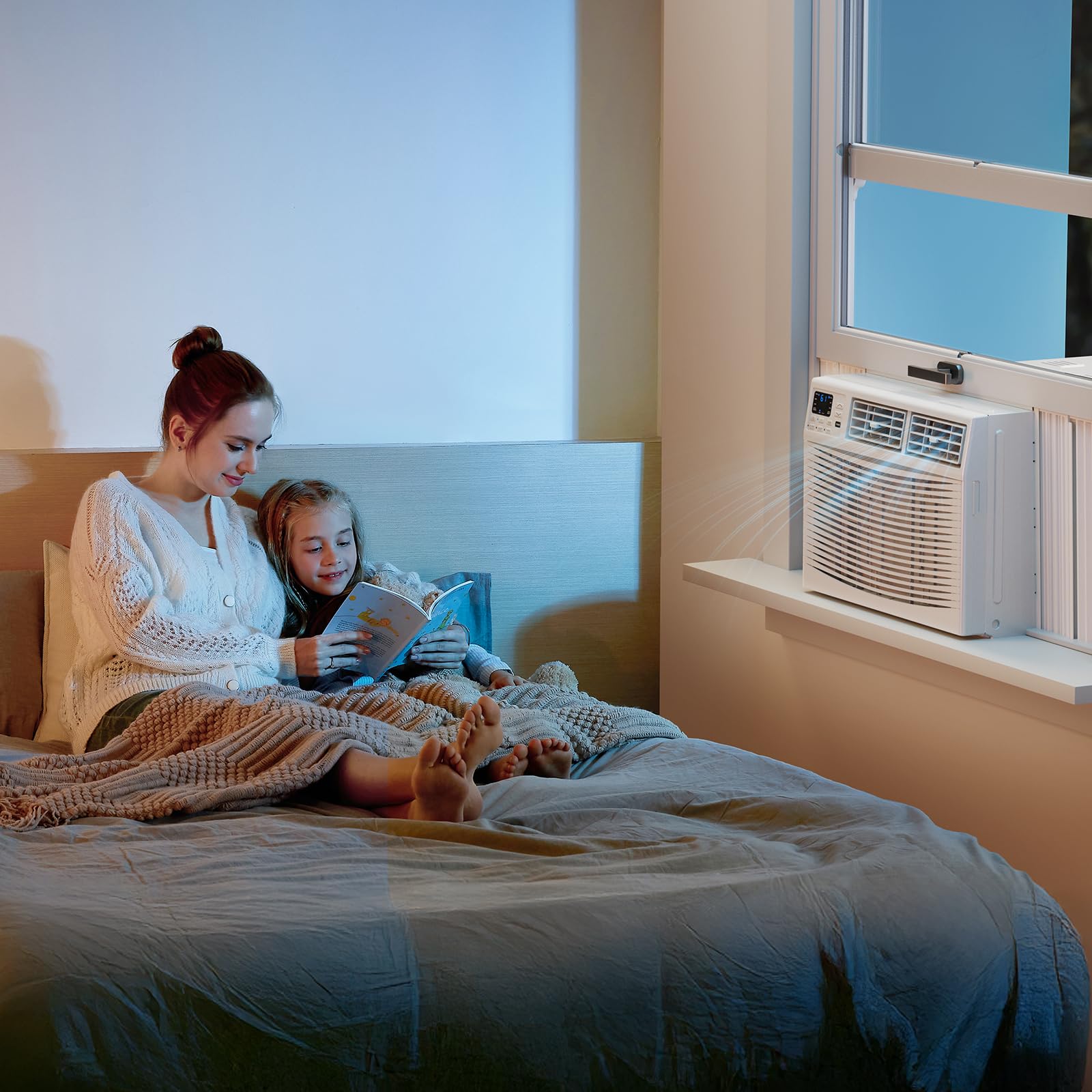So, you're looking at a window air conditioner that also heats. It's a brilliant all-in-one solution for year-round comfort. But when you compare models, you'll see some are labeled as "heat pumps" while others use "electric heat." What's the difference, and why does it matter for your wallet?
The core difference isn't in the warmth you feel, but in the method and cost-efficiency of creating that warmth. One is like a clever energy recycler, and the other is a powerful, straightforward workhorse.
The Energy Recycler: How a Heat Pump Works
Imagine your air conditioner in reverse. In the summer, it extracts heat from your room and dumps it outside. In the winter, a heat pump does the opposite: it extracts heat from the outside air and moves it inside to warm your room.
Yes, you read that correctly—it finds heat in cold air. Even when it's 40°F (4°C) outside, there is still a significant amount of thermal energy in the air. The heat pump uses a refrigerant cycle to capture this energy and transfer it indoors. It's not creating heat; it's moving it.
The Key Takeaway: A heat pump is incredibly efficient. For every 1 unit of electrical energy it consumes, it can move 2 to 4 units of heat energy into your home. This makes it very cheap to run for mild winter climates.
Its Limitation: As the outside temperature plummets, there's less ambient heat to extract. Its efficiency drops, and its heating ability weakens. Once temperatures dip below freezing (around 32°F or 0°C), most heat pumps struggle and need help (see "The Hybrid Approach" below).
The Powerful Workhorse: How Electric Heat Works
This method is much easier to understand. Electric resistance heating works exactly like a classic space heater or a giant version of the toaster in your kitchen. Electricity flows through a resistant wire, causing it to get very hot. A fan then blows air across this hot element, circulating warmth throughout the room.
The Key Takeaway: Electric heat is 100% efficient. All the electrical energy it consumes is converted directly into heat. However, this is also its downside. For every 1 unit of electrical energy you pay for, you get exactly 1 unit of heat out. There is no multiplier effect like with a heat pump.
Its Advantage: Electric heat is powerful and effective no matter how cold it gets outside. It doesn't rely on outside air temperature, so it will provide consistent, reliable heat even in a deep freeze.
Side-by-Side Comparison
| Feature | Heat Pump | Electric Resistance Heat |
|---|---|---|
| How it Works | Moves existing heat from outside to inside. | Creates heat directly using a heating element. |
| Efficiency | Very High. Can be 200-400% efficient. | Standard. Always 100% efficient. |
| Operating Cost | Lower in mild climates (above 35-40°F / 2-4°C). | Higher, as it uses more electricity for the same warmth. |
| Heating Performance in Cold | Declines significantly in freezing temperatures. | Consistently strong, regardless of outdoor temperature. |
| Upfront Cost | Typically higher. | Typically lower. |
The Hybrid Approach: The Best of Both Worlds
Many modern "heat/cool" window units are actually hybrids. They primarily use the highly efficient heat pump for heating. But when the sensor detects that the outside temperature has become too cold for the heat pump to work effectively, it automatically switches over to the electric resistance heater. This ensures you always have heat when you need it, while maximizing efficiency most of the time.
So, Which One is Right for You?
-
Choose a unit with a HEAT PUMP if:
You live in a region with mild winters where temperatures rarely stay below freezing. You want the most energy-efficient and cost-effective heating for climates like the southern U.S. or the Pacific Northwest. -
Choose a unit with ELECTRIC RESISTANCE HEAT if:
Your primary need is cooling, and you only need supplemental heat for a few chilly weeks in the fall or spring. You live where winters are very cold and need a heater that works reliably in sub-freezing temperatures. You are on a tighter budget for the initial purchase.
By understanding this key difference, you can move beyond the specs sheet and choose a window AC/heater that delivers the right kind of warmth for your climate and your budget.


